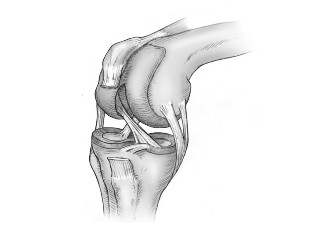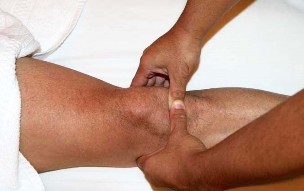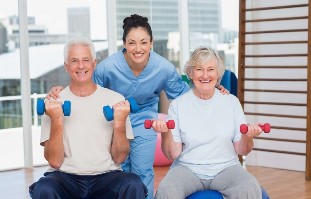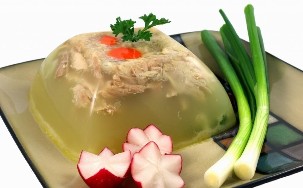Arthritis and arthrosis negatively affect the full life of the patient. When signs of the described lesions of the joints appear, people make hasty conclusions. They can make mistakes, confuse the indicated pathologies. It is important to remember that the difference between arthritis and arthrosis of the knee joint is significant. Let's consider in more detail the features of each disease. We will find out their differences, as well as how arthrosis differs from gonarthrosis of the knee joint.
Terminology Expansion
Arthritis and arthrosis are considered cognate words. Both mean joint damage. Due to the consonance of terms, patients often perceive them as synonyms. This approach is wrong. To know how arthritis differs from arthrosis of the knee joint, you need to consider the characteristics of each.
Arthrosis
Arthrosis is represented by deformation of the joints. Pathology is considered age-related. It is more common in elderly patients. It is also found in people under 40. More often, its occurrence is provoked by severe injury to the joints, fractures. The risk group is represented by athletes. Read more about arthrosis of the knee joint.Arthritis
Arthritis is an inflammatory pathology that develops in a compound. Usually, its occurrence is manifested by a deterioration in the functioning of the connection. The entire body is inflamed. The disease can flare up in any joint. It can also cover several connections at once. Learn more about knee arthritis.Difference between arthritis and arthrosis
The difference between arthritis and arthrosis is represented by the nuance that an immune failure is considered a provocateur of inflammation. It can manifest itself:
- Stressful situation;
- Hypothermia;
- Postponed influenza.
Inflammation is provoked by an infectious agent, metabolic disorders, and immunity malfunctions. With the enhanced function of the body's defense system, the immune system works against itself.
Signs of Arthritis
This joint pathology is manifested by the main signs and additional ones. The main ones are:
- Joint pain. It is strong, worse at night;
- Redness of the dermis over the affected joint, swelling.
Additional signs of inflammatory disease are also observed:
- night pains, manifested with complete rest;
- pain relief when moving;
- morning stiffness. It passes after an hour;
- redness, swelling of the knees;
- attacks of severe pain in the knee area. They last for several days;
- the presence of dense nodules under the skin;
- subfebrile temperature;
- alternating swelling of joints;
- blistering on the dermis, redness. They indicate the development of a reactive form of pathology;
- decreased appetite;
- weight loss.
Signs of arthrosis
The considered joint damage occurs with main and additional signs. Among the main ones are:
- Joint crunch;
- localization in the knee area;
- limiting connection mobility;
- Pain is more common when moving. In a calm state, it rarely appears;
- joint deformation. Its appearance changes, the direction of the limbs can change;
- deterioration of blood supply, nutrition of joint tissues.
Specific manifestations are:
- Onset of pain at night;
- pain subsiding at rest;
- NSAIDs do not relieve pain;
- painful crunch;
- limited joint mobility;
- overgrowth of osteophytes.
Differences in major joint lesions

The key difference between arthrosis and arthritis is represented by the fact that arthrosis is a pathology of the joints that destroys and deforms it. Arthritis affects the functioning of internal organs. The kidneys, heart, and liver suffer from this disease. When choosing a treatment, doctors pay special attention to the internal organs.
To make it easier to distinguish diseases, we will illustrate them below.
| Signs of pathology | Osteoarthritis | Arthritis/ zxtr>| Pain syndrome |
It usually appears after movement. Pains are also felt after heavy exertion. People do not pay enough attention, thinking that pain provokes overexertion. The disease progresses and leads to painful sensations during light loads on the joint. The knees are also troublesome on rest days, when the joint is not affected. In a comfortable position, the pain does not bother and subsides. |
With this pathology, pain is felt all the time (with vigorous physical activity, at work, in a calm state). The disease is characterized by night pains, which are often disturbing from 3 to 5 in the morning. |
Crunch |
It is peculiar to this connection defeat. Its occurrence is provoked by the destruction of the cartilaginous layer, bone friction. At the same time, a specific sound is heard (dry, rough). It increases with the progression of the disease. |
| Decreased joint mobility |
The affected joint reduces the range of motion. |
The joints, the whole body, are bound. |
Deformation of the joint |
It appears gradually at the joints. If the disease aggravates the aching type of pain. There is usually no swelling. |
Warp is also present. The area of the affected joint turns red, swells. After pressing, acute pain is felt. Possible nodules. The temperature of the site of inflammation rises. |
Blood test results |
Osteoarthritis does not tend to affect the blood test score. Inflammatory markers remain unchanged. |
This disease is characterized by an increase in ESR. An increase in the level of leukocytes indicates the course of inflammation in the joint. Biochemical analysis data show an increase in inflammatory markers. |
Localization |
Most often fixed in the knee joints. Less commonly, the disease covers the joints of the fingers, ankle. |
| |
Is there a difference between arthrosis and gonarthrosis of the knee joint? Gonarthrosis is an arthrosis that develops in the area of the knee joints. This pathology can be confused with a number of diseases:
- Meniscopathy.It is represented by damage to the menisci. This pathology, blockade of the knee joint can be observed in patients of different ages, of both sexes. Basically, one connection is subject to damage. The difference from gonarthrosis is rapid development. It is manifested by a crunch, acute pain of the joint after running, jumping, walking. After 10 - 15 minutes. sharp pains pass.
- Coxarthrosis(arthrosis of the hip joint). This diagnosis can be made due to the reflection of pain in the area from the hip joint to the knee. It is quite easy to differentiate such a state. With coxarthrosis, the mobility of the knee joint does not change. It bends easily, without pain. Doctors notice a decrease in the ability to rotate the leg "from the hip". It is also difficult to spread your legs to the sides.
- Vascular painmanifested in the knee. Pain may indicate a deterioration in blood circulation in the knee joint area. Such sensations are observed in adolescence. At this time, there is an active growth. Vessels do not have time to develop as quickly as bones. Pain in pathology is symmetrical, it manifests itself equally in both limbs.
- Periarthritis. With inflammation of the knee tendons, pain is felt after carrying heavy bags, after going down the stairs. Most often, pathology is observed in women over 40 years old. The pain does not extend to the entire knee. It is felt only on the inner surface of the knees. Knee mobility is unlimited.
Differential Diagnostics
With the described diseases of the joints, the doctor directs the patient to perform differential diagnostics. It is important to distinguish between arthritis and arthrosis. There are also a number of subtypes of arthritis. Osteoarthritis proceeds in several stages.
To distinguish these two pathologies from each other and from a number of other knee lesions, appoint:
- X-ray of compounds;
- blood biochemistry;
- rheumatic tests;
- CT;
- x-ray of the spine;
- MRI;
- bone scan.
Treatment of joint lesions
It is important to know what pathology you have been diagnosed with (arthrosis or arthritis of the knee joint) and not to be confused. In the treatment of these diseases, various approaches are used.
Medicines in the treatment of arthrosis

In the treatment of arthrosis, doctors use medications (painkillers, hormonal medications). they also use physiotherapeutic procedures, therapeutic exercises, massage. If the case of pathology is especially severe, medications containing glucosamine sulfate are used. In some cases, surgery is required.
Therapeutic course for arthritis
Doctors choose a therapeutic course for arthritis taking into account the form of pathology. Patients should avoid enhanced physical. loads, excessive intake of alcoholic beverages, unhealthy diet. The therapy is carried out with the use of medications (non-steroidal anti-inflammatory drugs, antibiotics). To increase the effectiveness of the treatment being carried out, physiotherapy procedures, exercise therapy are prescribed.
Prevention of joint pathologies
To prevent the development of pathologies such as arthrosis or arthritis of the knee joint, it is worth listening to the recommendations of specialists. As preventive measures, you must comply with the following requirements:
- Proper nutrition;
- Moderate physicalload.

Each of these activities will be required even after the treatment. Let's consider the features of each of them.
Physical activity
They must be moderate. Such exercises contribute to weight loss, strengthening of the corset of muscle fibers, and increased blood circulation. Each item is very important in the prevention of joint diseases.
Heavy load on connections
Patients need to be careful. If you put an increased load on the joints, injure them accidentally, you can get the opposite effect. Instead of improving the condition, new problems will appear. It is also dangerous to improperly perform exercises from the exercise therapy complex. All classes should be carried out under the supervision of an instructor, attending physician.
Joint gymnastics
As a preventive measure, it is sufficient to perform joint exercises. It's pretty common. It is not difficult to carry out it. In addition, there is no need to purchase special equipment. Particular attention should be paid to pool exercises. When performing any activity in the water, the load on the joints is minimal.
Proper nutrition
Doctors recommend reviewing your diet, preferences in food choice. For the purpose of prevention, doctors recommend excluding a number of products from the daily menu. Among them:
- Red Meat;
- Alcohol;
- Foods with high fat levels.
Must be included in the diet:
- Seafood;
- Fruit;
- Fish;
- Gelatin (it can be used as jellied meat, jelly dessert);
- Vegetables

Drink 2-3 liters of water a day. Alcohol is excluded. You need to start taking vitamins: calcium, D, B, A.
Other preventive measures are:
- Weight control;
- Protection against hypothermia of joints;
- Compulsory maintenance of a healthy lifestyle;
- Correct sleep, rest;
- Wearing comfortable shoes. It is possible to use shoes with orthopedic insoles, comfortable heels;
- Elimination of such a bad habit as crossing legs while sitting;
- Eliminate stress.
















































